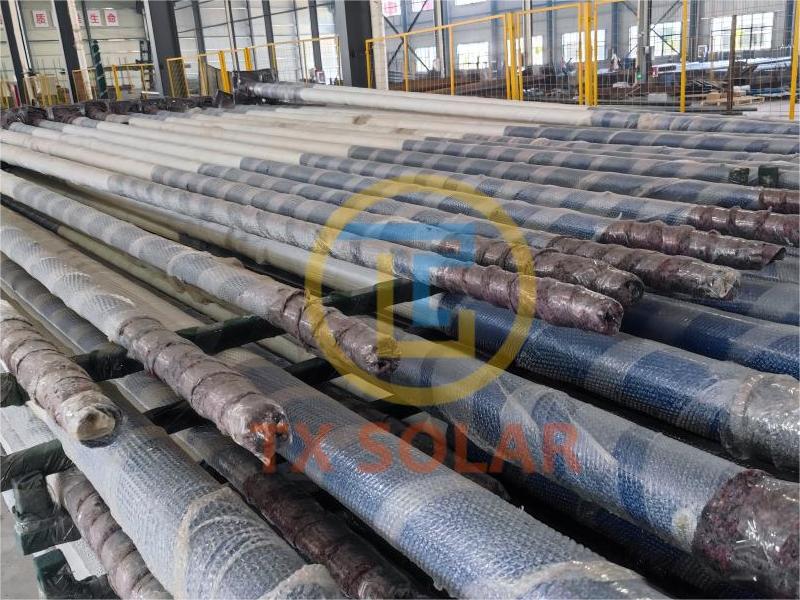Når det kommer til at vælge enlysmastDer findes mange muligheder på markedet til dine udendørs belysningsbehov. To populære muligheder er aluminiumsmaster og stålmaster. Selvom begge materialer tilbyder holdbarhed og lang levetid, er der nogle vigtige forskelle at overveje, når du træffer din beslutning. I denne artikel vil vi undersøge forskellene mellem aluminiums- og stålmaster for at hjælpe dig med at træffe et informeret valg til dit belysningsprojekt.
For det første adskiller materialesammensætningen af aluminiums- og stålmaster dem fra andre. Aluminium er et let, korrosionsbestandigt metal kendt for sin styrke og holdbarhed. Stål er derimod et tungere og stærkere metal, der ofte vælges for sin høje trækstyrke og slagfasthed. Valget mellem aluminiums- og stålmaster afhænger i høj grad af de specifikke krav til belysningsanvendelsen.
En af de største fordele ved aluminiumsmaster er deres korrosionsbestandighed. Aluminium ruster ikke, hvilket gør det ideelt til udendørsmiljøer, der kræver udsættelse for fugt og barske vejrforhold. Dette gør aluminiumsmaster til et populært valg i kystområder, hvor saltluft kan forårsage korrosion af traditionelle stålmaster. Derudover er aluminiumsmaster lettere at vedligeholde og kræver mindre maling eller belægning end stålmaster.
Stålmaster er derimod kendt for deres overlegne styrke og holdbarhed. Stål er et tungere metal, hvilket gør det mere modstandsdygtigt over for bøjning og vridning under tunge belastninger eller barske miljøforhold. Stålmaster bruges typisk i områder med stærk vind, kraftig sne eller andre barske klimaer, der kræver en stærk og stabil støttestruktur. Selvom stålmaster kan kræve hyppigere vedligeholdelse for at forhindre rust og korrosion, er de generelt mere holdbare og kan modstå større slid over tid.
Med hensyn til omkostninger er aluminiumsmaster generelt dyrere end stålmaster. Dette skyldes de højere omkostninger til råmaterialer og fremstillingsprocesser til produktion af aluminiumsprodukter. For nogle købere kan de langsigtede fordele ved aluminiumsmaster, såsom korrosionsbestandighed og lave vedligeholdelseskrav, dog opveje den oprindelige pris. Stålmaster er derimod generelt billigere, men kan kræve yderligere vedligeholdelse og maling for at forhindre rust og korrosion over tid.
En anden vigtig faktor at overveje, når man sammenligner aluminiumsmaster med stålmaster, er miljøpåvirkningen af hvert materiale. Aluminium er et meget genanvendeligt materiale, der nemt kan genbruges eller genanvendes, når dets levetid er slut. Dette gør aluminiumsmaster til et mere bæredygtigt valg til miljøvenlige projekter. Stål, selvom det også er genanvendeligt, kræver mere energi og ressourcer at producere og genbruge, hvilket gør det til en mindre bæredygtig løsning i nogle tilfælde.
Kort sagt afhænger valget mellem lysmaster i aluminium og stål af en række faktorer, herunder de specifikke krav til belysningsanvendelsen, miljøforhold og budgetmæssige overvejelser. Lysmaster i aluminium er korrosionsbestandige og har lave vedligeholdelseskrav, hvilket gør dem ideelle til kystområder og andre barske miljøer. Lysmaster i stål tilbyder derimod overlegen styrke og holdbarhed, hvilket gør dem velegnede til områder med kraftig vind- eller snebelastning. Når du vælger lysmaster til dit udendørs belysningsprojekt, skal du overveje disse forskelle omhyggeligt for at sikre, at du vælger den løsning, der bedst passer til dine behov.
Hvis du skal vælge en lysmast, bedes du kontakteTIANXIANGfor professionel rådgivning.
Opslagstidspunkt: 7. feb. 2024

